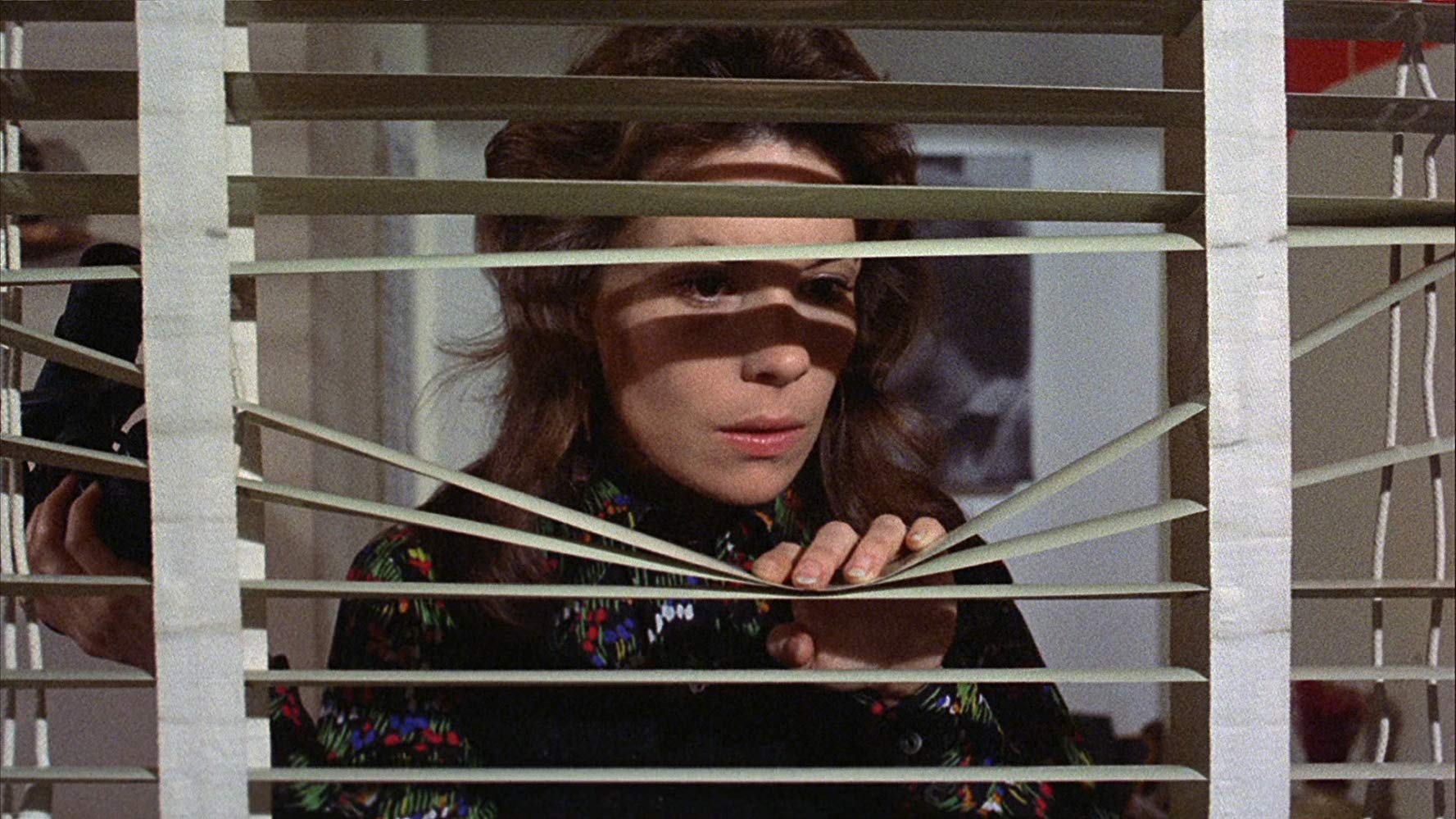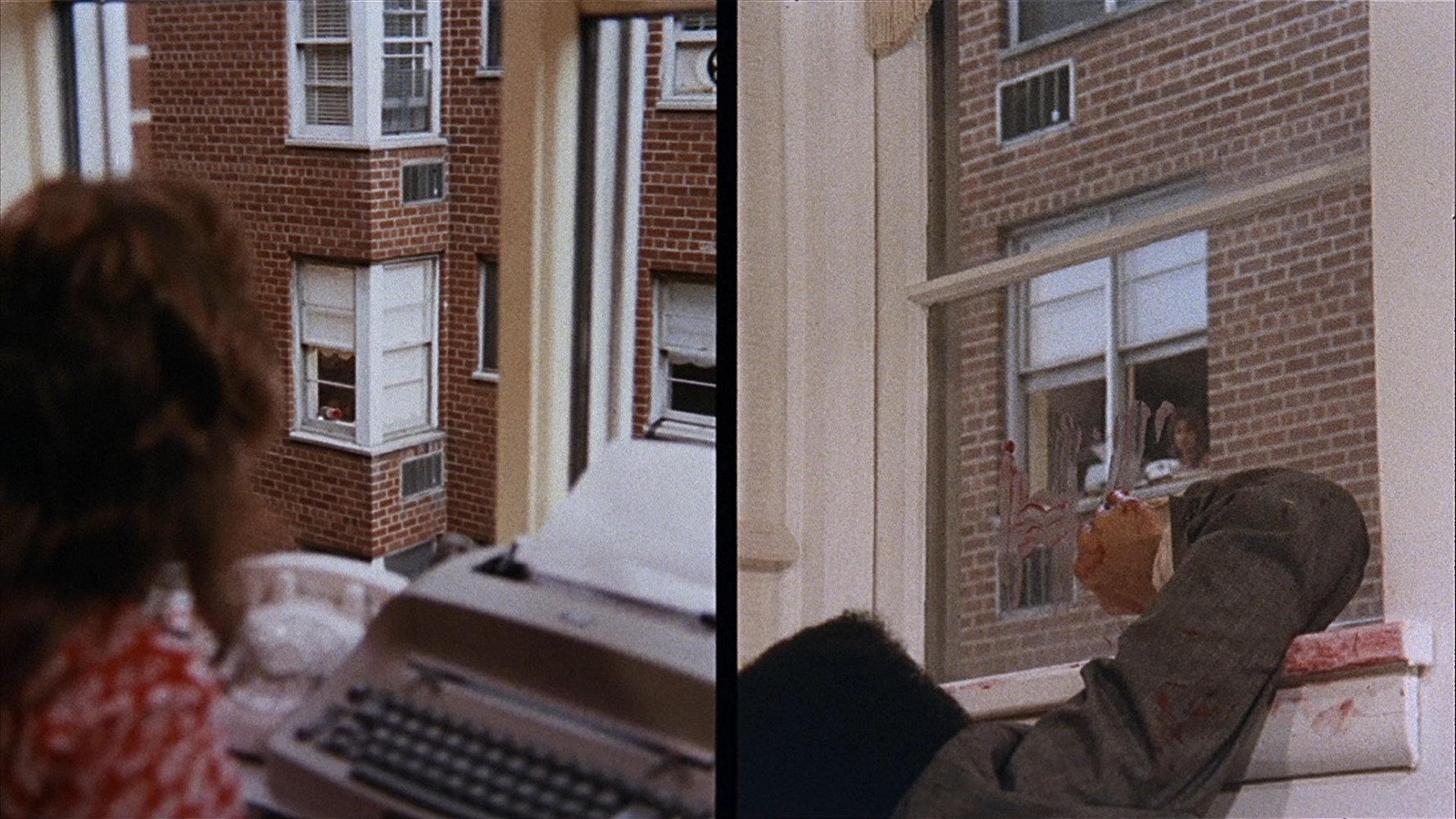As I mentioned above, the best part about this film is De Palma’s unique directing style- particularly the innovation he uses with different aspect ratios and techniques. One of the first scenes starts with a cropped 4X3 aspect ratio to illustrate that we’re watching the television game show on which Phillip and Danielle appeared. It’s a unique way to start the film, as this is the way we’re introduced to the characters- this aspect ratio is brought back a few different times throughout the film, almost any time the characters watch something on a screen. Where the film really started to impress me was with the split screen side by sides that first start to occur right after Phillip is stabbed. On one side of the screen, we watch as a wounded Phillip crawls away from the place where he was stabbed, and on the other screen we watch as Grace watches in horror and then calls the cops. The split screen resumes shortly after- the cops arrive and talk to Grace, and simultaneously, Danielle and Emil decide what to do with the body. It’s an incredibly interesting way to tell the story for a couple of different reasons; first, this builds a lot of tension. We’re able to watch the crime scene being cleaned up, while at the same time watching as Grace argues with the police about going up to the apartment in the first place. Second, the film again employs the ‘psycho technique’ of killing off who we’d assume might’ve been a main character rather early in the film and completely switching perspectives for a majority of the remainder of the film. There is another scene later on in the film that we see through binoculars, watching a character in a parallel apartment (ala ”Rear Window”). The scene is done entirely in one take, and we watch as a whole story takes place before our eyes without a single bit of dialog- it’s all visual directing, and it’s fantastic. De Palma also uses black and white photography to show some of the flashback scenes, and it makes some of the images towards the end even more shocking. I thought both Margot Kidder and Jennifer Salt were really good in this; William Finley, whom I’ve only seen in “Phantom of the Paradise” before was pretty creepy, and Lisle Wilson was rather likeable and sympathetic as Danielle’s ill-fated lover.
Overall I was kind of split on the writing for this film. As far as dialogue goes, the writing was absolutely fine. Even the beginning of this film seemed to drip with sarcasm as Danielle and Phillip meet on a game show called “Peeping Tom,” and they win gifts that seem painfully stereotypical (Phillip is African American and they give him a dinner for two gift card to a place called African House, and Danielle receives a new set of cutlery). That stuff, I actually thought was pretty funny, and purposefully satirical. The problem came with the way that it portrayed people born with abnormalities. This film seemed to enjoy the idea of ‘freakish’ beings, and to me that felt a little outdated. It wasn’t so bad as Tod Browning’s “Freaks”, where malformed men literally attack someone at the end, but it did feel like it was fine with furthering a phobia of those who might’ve been born differently. Still, this film is pretty farfetched as far as some of the twists go, so I wouldn’t say that would be a huge detractor for me; just something I’d feel weird about not mentioning.
Verdict:
Overall this film is pretty fantastic- as a story I probably would’ve only given it a 3.5/5, but there are so many interesting techniques used throughout this film that to give it anything less than a 4 Star would be a travesty. I’ve watched quite a few of De Palma’s films in the past year, and this one is actually one of my favorites now.









